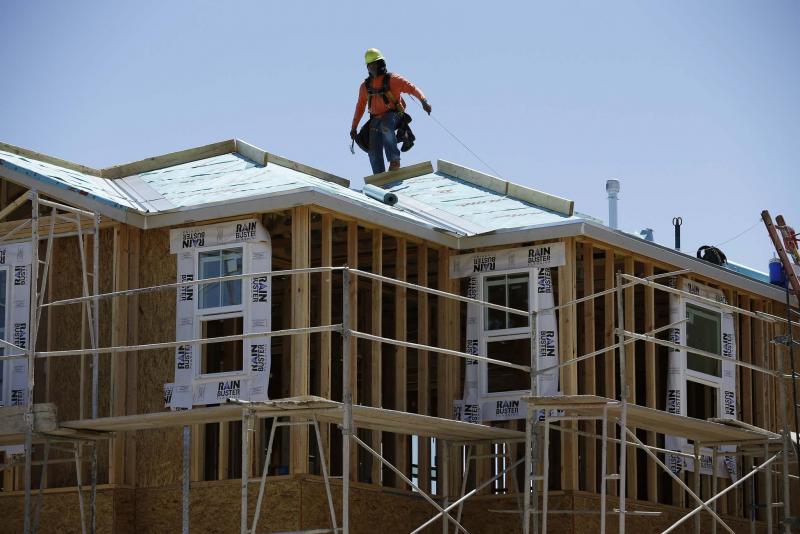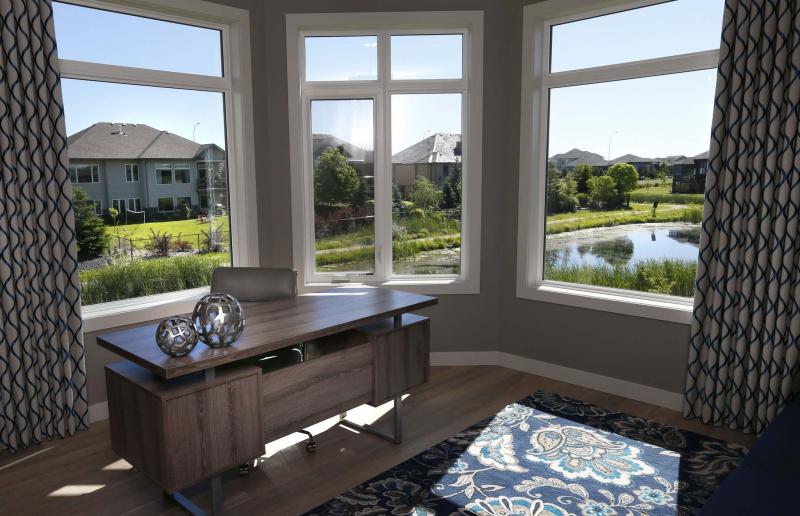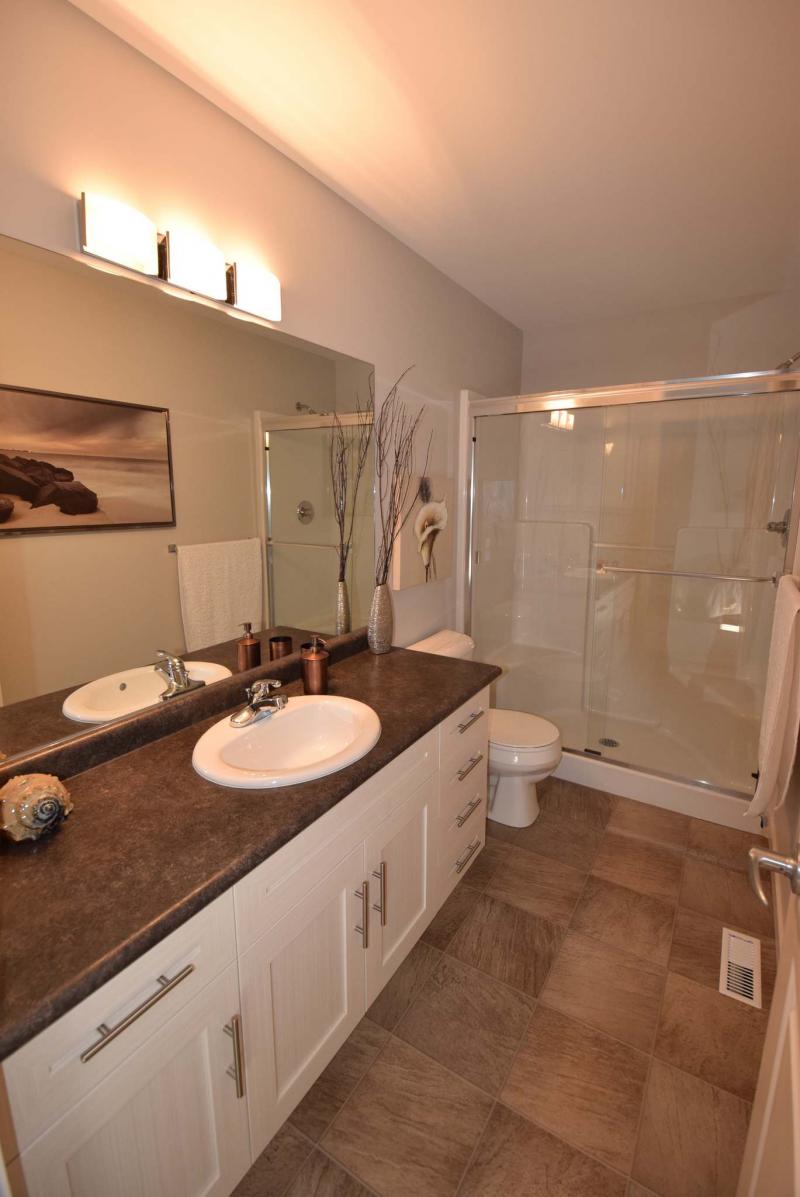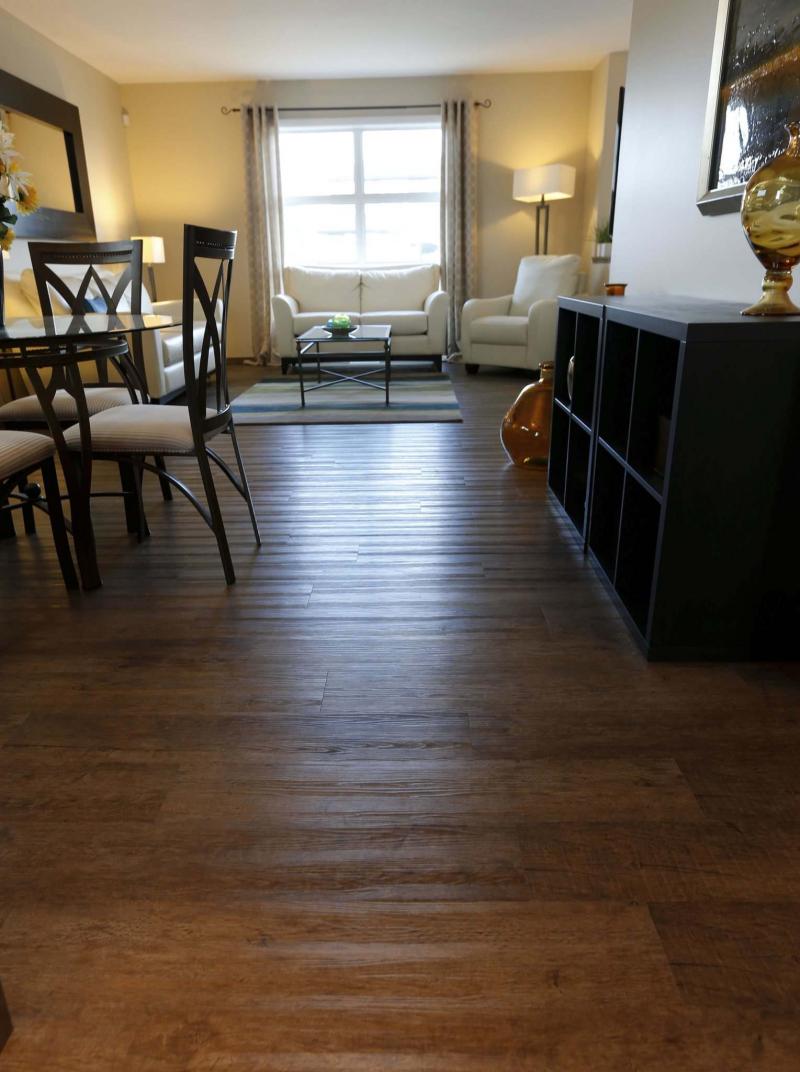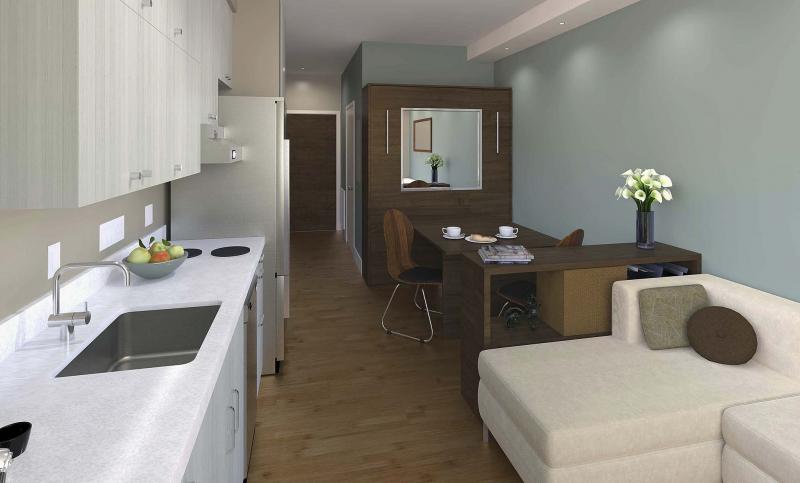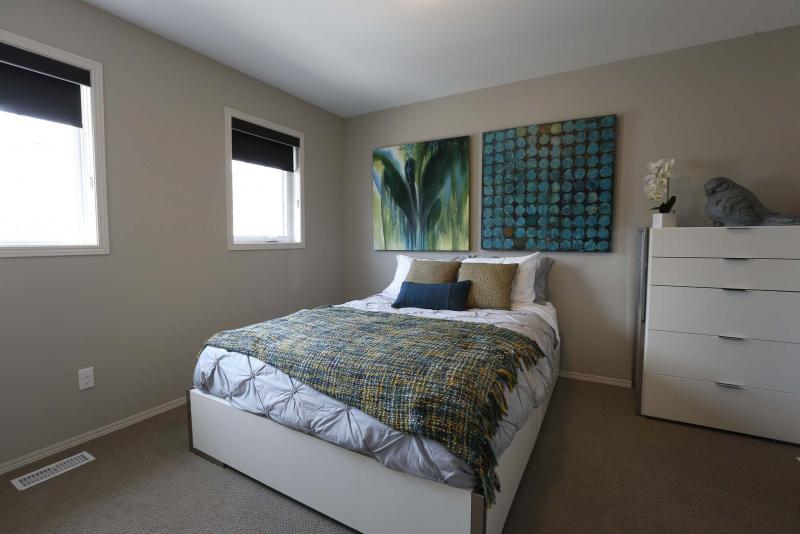New Homes
New Homes
FORM and FUNCTION
As exciting as style is — especially in a new home — one design feature should always trump it. That feature? None other than functionality.
Simply put, if a home doesn’t possess a high level of function, it doesn’t matter how stylish it is. Consequently, some larger, very fashionable homes lack function because too much emphasis was placed on style.
On the other hand, some homes are loaded with function despite seeming on the small side. The Mendoza — a 1,656-square-foot, two-storey design found at 152 Cherrywood Rd. in Bridgwater Trails — is one of those designs, said Broadview Homes’ new homes sales consultant, Rich Juchnowski.
"Almost everyone who’s been through the home has said they thought the home is larger than its listed square footage," he said.
"We’ve had a lot of compliments on this home. It’s deceptively large and features all kinds of function on all three of its levels. All the available space is very well-used."
There are several reasons why the Mendoza feels closer to 1,800 or 1,900 square feet in size, said Juchnowski: a generous foyer, cavernous (and bright) living room/dining room, a highly functional kitchen, two secondary bedrooms with — get this — walk-in closets, and a spacious (and well-appointed) master suite.
While the Mendoza is a relatively compact 1,656 square feet (not including the finished lower level; more on it a bit later), its foyer — the space where first impressions on a home’s functionality are made — is not a mere postage stamp. In fact, it’s about eight feet wide by seven feet deep, with a double closet. Score a point for a positive first impression here.
Next comes the cavernous living room/dining room, where that inherent feeling of livability goes up another notch. "The dining room is about nearly 12 feet by 11 feet in size, while the living room is 16 feet by nearly 13 feet," he said. "There’s a table for six in the show home’s dining room, and it fits perfectly. If you’re entertaining, you could easily extend it to a table for 10. It’s next to a large window, while there’s a huge picture window on the living room’s front wall. There’s lots of room for furniture and all kinds of room to move."
Meanwhile, the island kitchen — which measures about 10.6 feet by 15.5 feet — is tucked away, yet still open to the dining room and living room. "It’s actually semi-hidden," Juchnowski said. "Which is a great feature as any mess in the kitchen will be hidden. The (three-foot by three-foot) island is a handy feature but is optional. There’s a huge (standard) window over the double sink, while the Thunder maple cabinets and (grey) glass tile backsplash are options. The (dark brown) laminate plank flooring is also an option."
Another option is the finished basement, which can be used as an in-law suite, or rental suite for students attending the University of Manitoba. "It’s an option that costs about $40,000. That includes a side entrance and fully finished lower level with bedroom, full bath, living room and kitchen area. We finished the basement in this home to show how much extra livability it provides. When you finish the lower level (it offers 514 square feet of livable space), you have a home that offers 2,170 square feet of total living space with four bedrooms and 31/2 baths."
Because the Mendoza’s upper level is roughly the same size as the main floor — they’re both just over 800 square feet in size — it’s also exceptionally functional. Both secondary bedrooms are larger than normal (at 10 feet by 11 feet and 10 feet by 10 feet, respectively), the main bath is huge, and the master suite is plenty big at approximately 14 feet by 12.3 feet.
The functionality in the three bedrooms doesn’t end there, said Juchnowski. "Both secondary bedrooms have walk-in closets, a feature normal for larger homes but rare for a home this size. The master suite also has a large ensuite with five-foot shower, (cork-style) vinyl floor and a big walk-in closet."
Another standard feature — oversized windows — makes the home feel even more livable, he added. "There are huge windows everywhere, in the living room, dining room and kitchen on the main floor, in the master suite, both bedrooms and even downstairs, where there are two large (transom-style) windows in the bedroom. There are even two large windows over the staircase. All that glass makes it a naturally bright home."
While this option-laden version of the Mendoza is priced at $438,900, a more basic version could be acquired by a budget-minded young family for significantly less, said Juchnowski. "With basic finishes and without the side entrance and finished lower level, the starting point for this home would be about $359,165. You can upgrade the flooring, cabinets (to Thunder oak) and countertops for about $8,000 to $10,000. We just sold a home down the street for $370,000. You can always finish the basement and put a garage on the (20-foot by 20-foot) garage pad at a later date."
It’s difficult to surpass the value and functionality the Mendoza offers, said Juchnowski.
"Broadview’s designers got every detail of this home right," he said.
"Few homes can rival the style, function and value that it delivers."
lewys@mymts.net
Address: 152 Cherrywood Rd., Bridgwater Trails
Style: Two-storey
Model: The Mendoza
Size: 1,656 sq. ft.
Bedrooms: 4
Bathrooms: 3 1/2
Price: $438,900 (Includes lot and net GST)
Contact: Rich Juchnowski, new home sales consultant, 204-946-2740
New Homes
Housing market assessment continues to cause confusion
The Canada Mortgage and Housing Corporation released its second quarter Housing Market Assessment recently and the results continue to cause anger and confusion.
The worst grades were given to Saskatoon, Regina, Calgary and Toronto; all of whom were labelled as having strong evidence of problematic conditions.
In the case of Calgary, no big surprise here. With the oil industry being where it is, one could claim overbuilding and overvaluation and not be far off the mark. However, for all of those forecasters of doom and gloom, there still is building activity occurring, and when oil hits $50 and $55 this year, Calgary will be just fine.
The Toronto forecast is of little concern to the industry. Cries of overvaluation are being accompanied by record sales. If it’s selling, it’s not over-priced. Local market demand determines price, not number crunching in Ottawa.
Builders and realtors in Regina and Saskatoon are extremely upset at their ratings. Both cities have been marked for strong evidence of overvaluation and overbuilding. However, they question the degree to which these situations occur. For instance, if a particular number is established for overbuilt, are they one house over the mark or 1,000? No indication is given. If the market is considered overvalued, is it by five per cent or 25 per cent? Again, no clarification for builders, buyers or sellers.
According to the CMHC, these concerns used to exist in the Winnipeg market, but never to the extent of our neighbours to the west, and not to that degree anymore. Both the Winnipeg Realtors and Manitoba Home Builders Association had the same questions for the CMHC.
Of course, as projected, the local market established resale prices on its own, and local builders built according to demand, both current and projected.
Single-family detached new-home starts appear to be up this month and this year in Winnipeg and the surrounding area.
April’s good weather resulted in a 26 per cent increase in starts over last year in the CMA, which then resulted in a 12 per cent increase for the first four months of the year. The City of Winnipeg showed encouraging numbers, however not as much as the surrounding area.
Not surprisingly, while single-family detached starts showed a significant increase, multi-family starts exhibited a significant decline from last year.
In 2015, a concerted effort was made to compensate for years of shortages in the multi-family sector, so construction was brisk in this area, so much so that it greatly outdistanced the single family market. It has now settled back into a stable 50/50 split similar to the previous three years.
Mike Moore is president of the Manitoba Homes Builders’ Association


